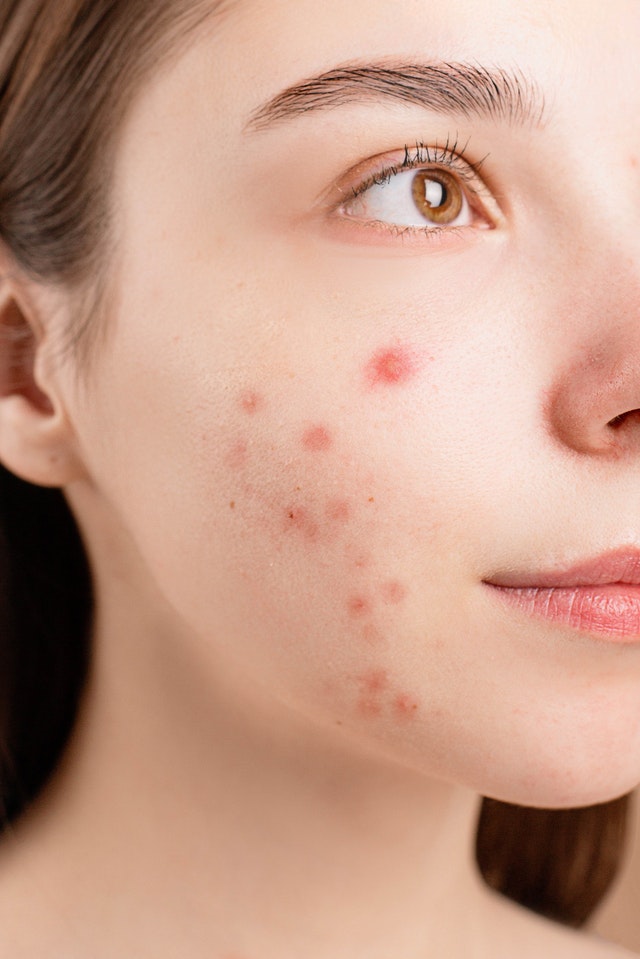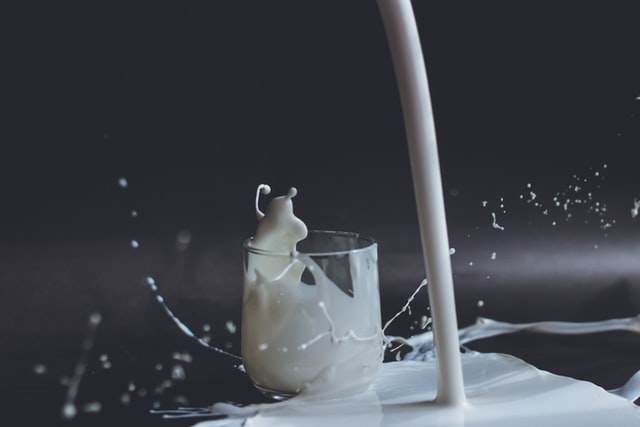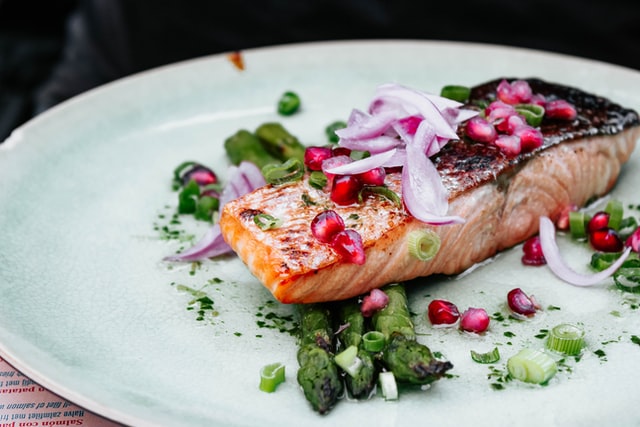Does Dairy Consumption Cause Acne?
Acne is one of the most common skin conditions in the world, affecting approximately 50 million people in the US alone. It is characterised by blackheads, whiteheads, pustules, papules and cysts which form as a result of clogged-up pores and an increased level of acne-causing bacteria. Recently, there has been increasing evidence to suggest that dairy consumption may be a contributing factor in the development of the skin condition.
Ask a dermatologist today about any breakouts, pimples or any other skin concerns today!
What Does the Science Actually Say?:
The correlation between diet and acne has been long debated, but dairy consumption comes out on top as the food product with the most significant evidence for its role in causing pimples. To this date, scientists have failed to conclude the actual relationship between the two. However, as scientific research continues, various studies exploring the link suggest that the association between dairy and acne cannot be simply ignored.
History of Acne & Dairy Research:
- In 2005, the first study consisting of over 40,000 female participants found that there was a positive link between acne development and skim milk and cottage cheese consumption.
- In 2006, the same researchers determines another positive relationship between acne-type breakouts and the consumption of whole, low-fat and skim milk in girls. However, no significant correlation was found between acne and dairy fat content.
- A 2008 follow-up study on boys discovered that acne and skim milk consumption were positively linked. However, unlike the previous study, there was no significant relationship between acne and whole or low-fat milk consumption.
- Another 2008 study reported that women who drank more milk in their teenage years presented a higher prevalence of severe acne than those who drank minimal amounts.
- In 2012, another study demonstrated a clear association between acne and the frequent intake of total milk and skim milk.
- In 2017, a meta-analysis found a positive relationship between dairy, total milk, whole milk, low-fat and skim milk consumption and acne occurrence. On the contrary, no significant association between yogurt/cheese and acne development was observed.
- Another 2017 study suggests that it may be milk’s high glycemic load that is responsible for causing acne breakouts
Which Dairy Products Cause Acne?:
There is a commonly circulating myth that all dairy causes acne. However, this isn’t the case. As presented in the studies above, research has indicated that skim and whole milk are more problematic when compared to other dairy products such as yogurt or hard cheese. In fact, studies have found that consuming yogurt can actually improve active breakouts. For instance, in 2010, researchers found that participants who consumed yogurt (fermented milk) containing lactoferrin had a decreased number of lesions.
Skim Milk & Whole Milk:
When comparing both skim and whole milk, research has shown that the prior causes double the number of skin problems. This could be due to the fact that skim milk contains more added sugar which increases the glycaemic index of the milk. Similarly, skim milk is also known to contain pro-inflammatory ingredients such as whey protein which has also been indicated to contribute to acne flare-ups.
Interestingly, it is also important to remember that whole milk is regularly supplemented with artificial hormones. These hormones can trigger inflammation and breakouts by modifying your body’s natural hormone balance.
How Does Dairy Cause Acne?:
Whilst research suggests a correlation between dairy and acne, the jury is still out on what the underlying mechanism may be. However, a few theories have been offered by scientists and health professionals alike:
- Hormones: The majority of milk in the U.S. comes from pregnant cows, the growth hormone levels in milk may play a role in excess sebum production, which consequently promotes acne. Digesting the whey and casein proteins within the milk releases insulin-like growth factors which influence sebum production and trigger breakouts.
- Processed Food: When milk products are combined with processed foods, internal insulin levels increase which increase the risk of pimples.
- Lactose Intolerance: Some people are lactose-intolerant which means that they have difficulty digesting dairy. When dairy is consumed, the body reacts negatively and it could come out in the form of cystic acne (hard, painful bumps under the skin) on the chin and jawline area.
Ask a dermatologist today about any breakouts, pimples or any other skin concerns today!
Should I Stop Consuming Dairy?
A dairy-free diet could help decrease sebum production which makes the skin less oily. This could reduce the presence of acne as oil commonly blocks pores which leads to pimples.
As such, you may want to consider removing dairy from your diet if you notice more breakouts and pimples appearing on your skin. Initially, begin by cutting out the product for a few weeks. If improvements are not observed then it’s unlikely that dairy is the cause of your acne.
If you adopt a dairy-free diet, you should also be aware that this could lead to a lack of calcium and vitamin D in your diet. As a result, you should remember to adequately supplement these vitamins via other sources.
Examples of non-dairy foods with high calcium content include:
- soybeans
- spinach
- okra
- kale
- some fish such as sardines and salmon
- some oatmeal and breakfast cereal
Examples of non-dairy foods with high vitamin D content include:
- fatty fish such as tuna, mackerel and salmon
- soy milk
- cereals
- beef liver
Key Takeaways:
- Research suggests that consuming dairy can trigger or worsen acne breakouts.
- In particular, skim, low-fat and whole milk have shown to have a stronger association with acne development than cheese and yogurt.
- The underlying mechanisms of how milk causes acne are still undetermined. However, many scientists believe that it could be due to the presence of growth hormones and pro-inflammatory factors in the milk.
- Experimenting with your diet by reducing dairy could be worth a try. But remember to be mindful with replacing calcium and vitamin D. It could take up to 8 weeks to see any results – so it’s important to keep patient.
Ask a dermatologist today about any breakouts, pimples or any other skin concerns today!
About the Author:
My name is Rain Speake, a BSc Human Biology and MSc Healthcare Technology graduate from the University of Birmingham. I have an interest in skincare and dermatology and have previously undertaken research on the formulation of an anti-scarring spray for oral delivery. Beyond the lab, I enjoy keeping up to date with emerging scientific trends and communicating health-related topics to the public.
Sources:
- https://www.aad.org/media/stats-numbers
- https://pubmed.ncbi.nlm.nih.gov/15692464/
- https://pubmed.ncbi.nlm.nih.gov/17083856/
- https://www.researchgate.net/publication/5656374_Milk_consumption_and_acne_in_teenage_boys
- https://pubmed.ncbi.nlm.nih.gov/18622200/
- https://pubmed.ncbi.nlm.nih.gov/22386050/?dopt=Abstract
- https://pubmed.ncbi.nlm.nih.gov/29778512/
- https://www.jandonline.org/article/S2212-2672(17)30334-9/fulltext
- https://pubmed.ncbi.nlm.nih.gov/29778512/
- https://www.ncbi.nlm.nih.gov/pmc/articles/PMC4106357/
- https://www.karger.com/Article/Abstract/325580
- https://www.webmd.com/food-recipes/guide/calcium-vitamin-d-foods#
Image Courtesy:
- Photo by Anna Nekrashevich from Pexels
- Photo by Anita Jankovic on Unsplash
- Photo by Visual Stories || Micheile on Unsplash
Ask a Dermatologist
Anonymous, fast and secure!

The Specialist doctor from the University Hospital in Gothenburg, alumnus UC Berkeley. My doctoral dissertation is about Digital Health and I have published 5 scientific articles in teledermatology and artificial intelligence and others.




